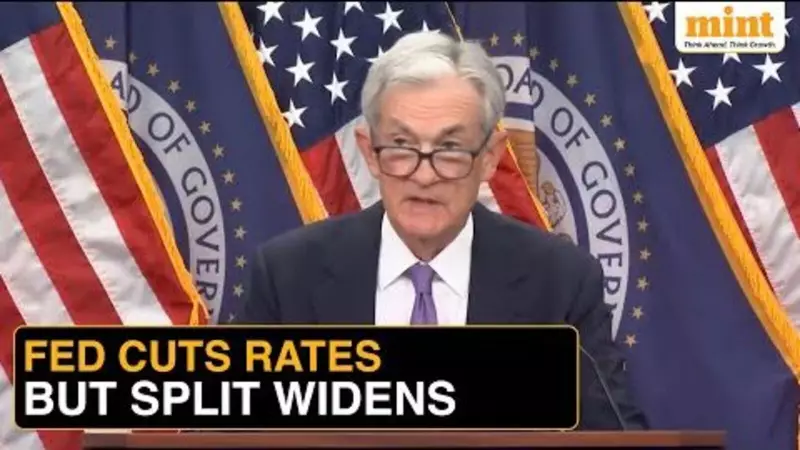
In a highly anticipated move that has global markets on edge, the US Federal Reserve has delivered another quarter-percentage-point interest rate reduction. However, the central bank's chairman, Jerome Powell, delivered a crucial warning that has left economists and investors parsing every word.
The Rate Cut Decision: What Just Happened?
The Federal Open Market Committee (FOMC) voted to lower the benchmark federal funds rate by 25 basis points, marking the latest in a series of monetary policy easing measures. This decision comes amid ongoing concerns about global economic growth and persistent trade tensions.
While the rate cut itself was widely expected by market participants, the accompanying commentary from Fed officials has created significant uncertainty about the future path of US monetary policy.
Powell's Warning Shot: December Move "Not Assured"
In his post-meeting press conference, Federal Reserve Chair Jerome Powell struck a notably cautious tone, explicitly stating that another rate cut in December is "not assured" or predetermined. This hawkish tilt surprised many market watchers who had priced in a more dovish trajectory.
"The Committee will be monitoring incoming information and assessing its implications for the economic outlook," Powell emphasized, suggesting that future decisions will be highly data-dependent rather than following a pre-set course.
Key Factors Influencing the Fed's Thinking
The Federal Reserve appears to be balancing multiple competing concerns:
- Global economic slowdown and manufacturing weakness
- Moderate US economic growth with strong consumer spending
- Subdued inflation pressures despite low unemployment
- Ongoing trade uncertainties and geopolitical risks
- Global central bank coordination amid synchronized easing
What This Means for India and Global Markets
The Fed's cautious approach creates both challenges and opportunities for emerging markets like India. A more hawkish Fed could:
- Limit the Reserve Bank of India's room for aggressive rate cuts
- Impact foreign institutional investment flows into Indian markets
- Influence the rupee-dollar exchange rate dynamics
- Affect corporate borrowing costs for Indian companies with dollar debt
Market analysts suggest that Indian policymakers will need to carefully calibrate their response to maintain economic stability while supporting growth objectives.
The Road Ahead: Reading the Fed's Tea Leaves
As we look toward the December FOMC meeting, investors should watch for several key indicators that will likely influence the Fed's next move:
- US employment and wage growth data
- Inflation trends and consumer spending patterns
- Developments in US-China trade negotiations
- Global economic indicators from Europe and China
- Financial market stability and volatility measures
The Federal Reserve has clearly entered a "wait-and-see" mode, making each economic data release between now and December critically important for market direction.





